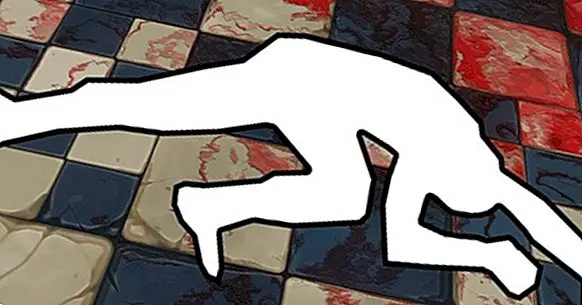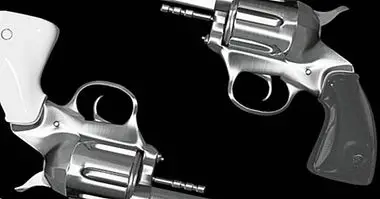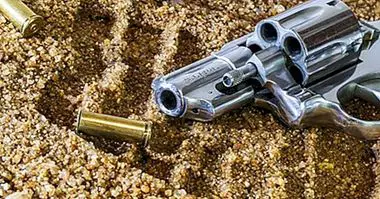Key body language to avoid being a victim of crime
Try to remember an acquaintance who has been assaulted on more than one occasion. Now, try to remember another but that has never been stripped of their belongings on the street. Remember how they look when they walk, how do they differ? Who looks more confident in their walk? Who looks more powerful and who weaker?
Robberies, aggressions ... and how to prevent them with an imposing body language
It is not unknown to us at present the importance of our body language when communicating , because day by day, various theories about this are increasingly widely accepted by the scientific community. Like the fact that approximately 80% of our communication is carried out through our gestures and expressions.
It is also through the latter that we can more easily empathize and manifest our emotions and feelings to others. But just as we can convey a positive state of mind, we can also project: insecurity, fear, vulnerability and helplessness through our body language . Today we will explain how this powerfully influences the process of victimization and victimodynamics (that is, how we become victims of a crime or a sinister), especially if the last four characteristics mentioned above are projected. In addition to giving you some tips to improve our body language.
The modern interest in the victim and the experiment
From the early work of Benjamin Mendelsson in the process of how to become a victim of a sinister, attack or crime in the sixties, victimology (discipline responsible for the study of victims) quickly became a motive for science social as criminology, law and of course psychology.
This interest in how people go from being simple passers-by to those wronged by a crime led to researchers Betty Grayson and Morris Stein, in the eighties, putting forward a simple experiment that produced a series of very specific results. The dynamic that Grayson and Stein made was the following: in a prison, a group of inmates (among whom were people who had been robbed, raped and even killed) were shown, individually, a series of videos whose content It was simply that of some passers-by walking normally down a New York street.
The only thing the defendants had to indicate to the investigators was to communicate to which people among all those who passed on the street would choose as possible victims . The researchers estimated that the time they decided on the possible victim was only seven seconds. When indicating their selections, the results were a little disconcerting since the choice that each inmate took was consistent, that is, although each volunteer had seen the video separately, the inmates repeatedly chose the same victims.
Prisoners choose their victims for their (bad) body language
Another curious fact turned out to be that the selection of each did not depend on race, age, size or physical constitution, as some women whose constitution seemed fragile, went unnoticed in contrast to some tall and relatively strong men who were chosen.
When the convicts were asked why such an election was due, they replied that they did not know exactly why, they simply said that they looked like easy targets . And since none of the previous criteria was the reason why choosing a person, what was it that determined whether a person became aggrieved or not? The researchers conducted a much more exhaustive analysis reaching the following results.
Our body language indicates whether we are vulnerable or strong
It seems that much of the predator / prey selection process is unconscious and this is due to the fact that the inmates were more oriented in what the body language of the possible victims expressed.
Characteristics of vulnerable body language
The researchers found that the group of "victims" chosen in the video shared a series of characteristics with respect to their body language highlighting the following points.
1. Step and rhythm
The "strides" that each victim made were somewhat exaggerated, being able to be abnormally long or extremely short. Sign of insecurity or anguish. On the other hand, those who were not selected recorded normal "strides" on their walk. With regard to the fluidity in walking, natural selection taught predators always look at the slowest of the herd . As a rule, a slow pace in walking, lacking intentionality or purpose projects insecurity, fear and helplessness.
2. Discontent and indecision
Turning to see everywhere as if he were lost, hesitant glances and returning by the same path through which he already traveled were common characteristics among some of the selected victims. An insecure person in his walk is, for criminals, easier to submit . In the same way, if you stop to talk to strangers to ask for directions, the criminals will think you are a tourist or you are in a neighborhood unknown to you, which will make you much more vulnerable.
3. Luxury items
Criminologists say that criminals live under a distorted scheme of values in which society is seen as an unjust system in which only few can enjoy privileges and luxuries, experiencing, in addition, anger against this society. So that publicly demonstrate your assets (for example, expensive watches, rings, gold pulses, expensive cell phones, etc.) rekindles in many occasions such rage . Many people who showed different assets in the video were frequently chosen as victims.
4. Torso and look
Another thing that the people chosen in the video had in common by the inmates consisted of the position of the torso and the direction of the look. Frequently, people who walked with their heads down, with their shoulders hunched and inward, hunched over and with their eyes directed towards the floor, distracted or lost, were chosen. The gestures previously indicated they are unmistakable signs of helplessness . They project strong weakness.
5. Totality
Last but not least, it stood out among the chosen victims who his gestures lacked symmetry and fullness in his movements . His limbs moved as if they were separate or independent of the rest of his body. On the other hand, "non-victims" enjoyed balance in relation to their movements.
How does this theory apply to the prevention of crimes?
As we emphasized earlier, a large part of the victim selection process is performed unconsciously by criminals. Perhaps it is a characteristic inherited through millions of years of evolution to find at a glance the weakest of the herd. Like a wild animal, the human predator wants to make the least effort when hunting, does not want a difficult and dangerous job , look for someone who looks weaker, submissive and who probably does not battle.
Several practical tricks to improve body language
Our body language is largely unconscious, so modifying it is extremely difficult, but not impossible. Some signs and attitudes can help us to emit a more powerful and positive body language, which will make us less vulnerable to crime . Below we make the following recommendations.
- Develop your awareness skills There are different ways to be more aware of your environment, from familiarizing yourself with the routes you take daily on the way home, the peak hours in which people move the most, and those who walk frequently through your neighborhood, to practice yoga, meditate or practice some martial art (we will talk about this later).
- Exercise: Keeping fit not only impacts your ability to physically repel an aggression but also causes your body to release dopamine and endorphins that make you feel better about yourself, which will make you develop more confidence in yourself and increase your self-esteem what will affect your body language positively.
- stay informed : it is scientifically proven that knowledge and information reduce our fear and increase our confidence, remember that this is a quality that is expressed in the body language of those who were not victims. Read articles on how to avoid being victims, personal defense and newspapers about what happens in your city can help you stay informed.
- Practice self defense : not to exercise it when an attacker asks for your belongings, since in this case, it will always be prudent to avoid any confrontation, but because it is demonstrated that taking a course of personal defense powerfully affects our confidence in a dangerous situation, this confidence It has a very positive effect on our body language and increases your awareness of the environment. Therefore, it reduces the likelihood of looking like a potential victim.
More tricks to improve body language
As you increase your confidence and feel better about yourself, the less likely you are to be a victim of a crime, since your body language will express well-being, power and confidence. As you change your body language little by little, you can choose to add the following gestures that can prevent you from becoming a victim:
- Always walk with your chin up , parallel to the horizon, keeping a fixed and sure look, when someone sees you keep your eyes, but do not be challenging (many times this tactic discourages criminals from messing with you).
- Lift the shoulders and keep them straight , take a little out of the chest, this is a sign of power.
- Walk at firm and normal steps . Neither very fast nor very slow. Not very long, not too short. Try to be harmonious and not "robotized".
- Keep a harmony in relation to your steps , your arms and your gestures.
- If you do not remember any street or doubts of your way , enter a café or store to ask for directions. Avoid asking for help from strangers and talking to them.
- Move your arms in a natural and balanced way Regarding your steps.
- Do not walk down the street with ostentatious jewelry . Avoid talking on your mobile phone, listening to music and looking distracted.
Bibliographic references:
- Grayson, B. and Stein, M. I. (1981), Attracting Assault: Victims'Nonverbal Cues. Journal of Communication, 31: 68-75. doi: 10.1111 / j.1460-2466.1981.tb01206.



















